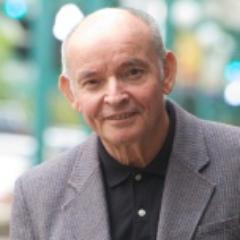Thomas Barker, University of Alberta – Transformative Learning
 College students can change as they learn.
College students can change as they learn.
Thomas Barker, Professor of Communication in the Graduate Program in Communication and Technology at the University of Alberta, explores how professors can help this process.
Thomas Barker, PhD is Professor of Communication in the Graduate Program in Communication and Technology in the Faculty of Arts. He served as Director of Technical Communication at Texas Tech University, and also served as Chair of the President’s Strategic Planning Advisory Council, and Faculty Advisor to the TTU Chapter of the Society for Technical Communication (STC). Professionally he served on the STC President’s Education Task Force, the Body of Knowledge Task Force. His current work is in leadership communication and risk communication. He helped develop the Advanced Citation in Leadership and the Wellness Leadership Series in the Faculty of Extension, and teaches graduate courses in leadership communication. He is a Contributing Faculty in the University of Alberta, Peter Lougheed Leadership College.
Transformative Learning
Some have said that transformative learning is the fundamental educational task of our times.
The best college teachers don’t just teach: they transform. We all remember teaching that transformed us in some ways.
Maybe this was through study-abroad, service-learning, or cooperative learning.
My study analyzed how three teaching trends–global learning, transformational learning, and Indigenization–offer transformative experiences?
To evaluate them, we ask a simple question: How do they transform students?
For example, Indigenized classes transform how we think about the land. Many of us see land as something to plow, mine, pave, or fence off. How can we transform by seeing land as identity, showing relationships to our past and future?
Can global learning work the same way? Many people see others around the globe as foreigners, or remote aliens. How can we transform by seeing them as humans who share our joys and concerns?
Comparing these trends shows how they transform learning. One does it by looking at the land under your feet; the other does it by looking at the land under all our feet.
Turns out, all three trends–global learning, transformational learning, and Indigenization–do the same thing: transform the learner. All three push learning in the same direction. Seeing that direction can help college programs work together.
Related Posts
-
 Cynthia Standley, University of Arizona College of Medicine – Phoenix – Interpreting Research Through an Artist’s Eyes
Artists and researchers could have a lot to collaborate on. Cynthia Standley, professor in
Cynthia Standley, University of Arizona College of Medicine – Phoenix – Interpreting Research Through an Artist’s Eyes
Artists and researchers could have a lot to collaborate on. Cynthia Standley, professor in -
 Samantha Goldman, Assumption University – The Impact of the COVID-19 Pandemic on Special Educators
On Assumption University Week: COVID-19 hit educators hard, especially those who teach special education
Samantha Goldman, Assumption University – The Impact of the COVID-19 Pandemic on Special Educators
On Assumption University Week: COVID-19 hit educators hard, especially those who teach special education
